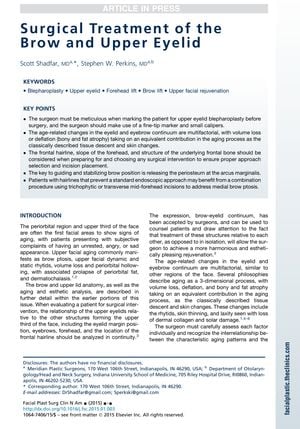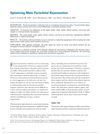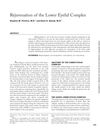Surgical Treatment of the Brow and Upper Eyelid
March 2015
in “
Facial plastic surgery clinics of North America
”

TLDR Individualized assessment and meticulous planning are crucial for successful brow and upper eyelid surgery.
The document discussed the surgical treatment of the brow and upper eyelid, emphasizing meticulous preoperative planning and patient marking to achieve optimal results. It highlighted the multifactorial nature of age-related changes in the eyelid and eyebrow continuum, including volume loss, tissue descent, and skin changes. The importance of considering the frontal hairline, forehead slope, and underlying bone structure when selecting surgical approaches and incision placements was stressed. Various techniques for brow elevation and stabilization were explored, with a focus on achieving a harmonious and aesthetically pleasing rejuvenation. The document also covered the need for a thorough medical history and ocular examination to identify any systemic diseases that could affect surgical outcomes.
The document detailed surgical techniques for brow and upper eyelid rejuvenation, focusing on endoscopic brow lifts, which had become preferred over traditional coronal lifts. The procedures involved precise incisions, careful dissection, and meticulous hemostasis to minimize complications and achieve aesthetic results. Techniques included the use of local anesthesia, botulinum toxin A, and specific suturing methods to reduce inflammatory responses and improve healing. The endoscopic approach allowed for less invasive surgery with inconspicuous scarring, even in patients with high hairlines or male pattern baldness. The document also emphasized the importance of preserving neurovascular structures and achieving stable fixation of the lifted tissues.
The document detailed various surgical techniques for brow and upper eyelid rejuvenation, emphasizing the use of trichophytic and mid-forehead incisions. It described meticulous closure methods to minimize scarring and complications, such as hematomas and hypesthesia, which were generally temporary. The endoscopic brow lift was highlighted as a safe, long-lasting, and effective method, with studies showing high patient satisfaction and long-term results. Postoperative care included strict eye moisturization and activity restrictions to ensure proper healing. The document concluded that individualized assessment of the upper facial structures is crucial for achieving optimal esthetic outcomes.

